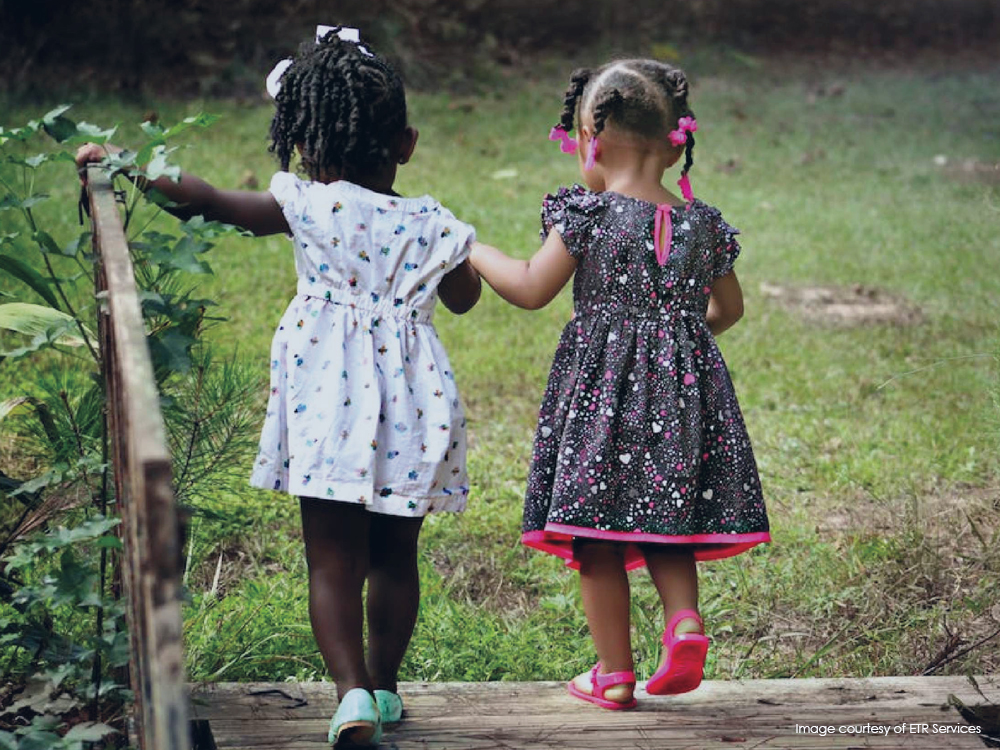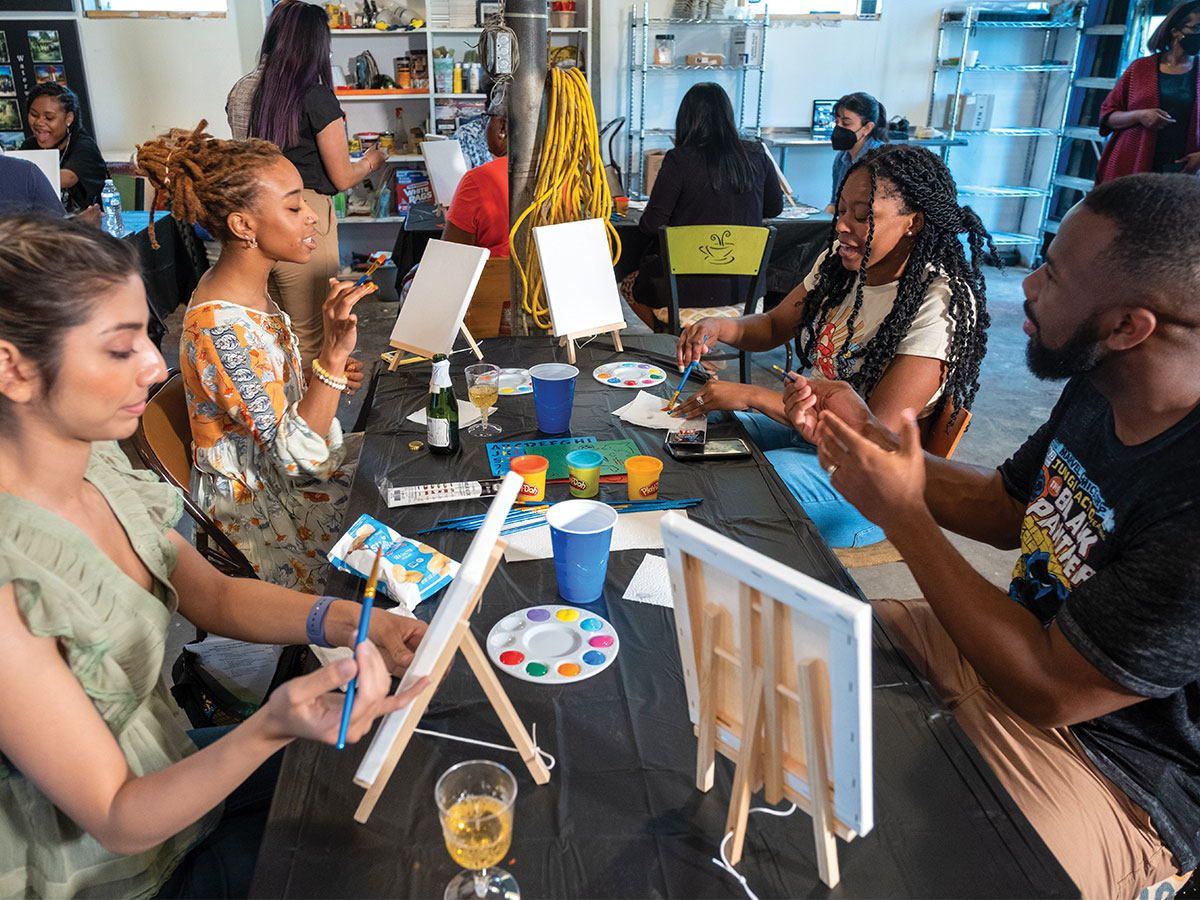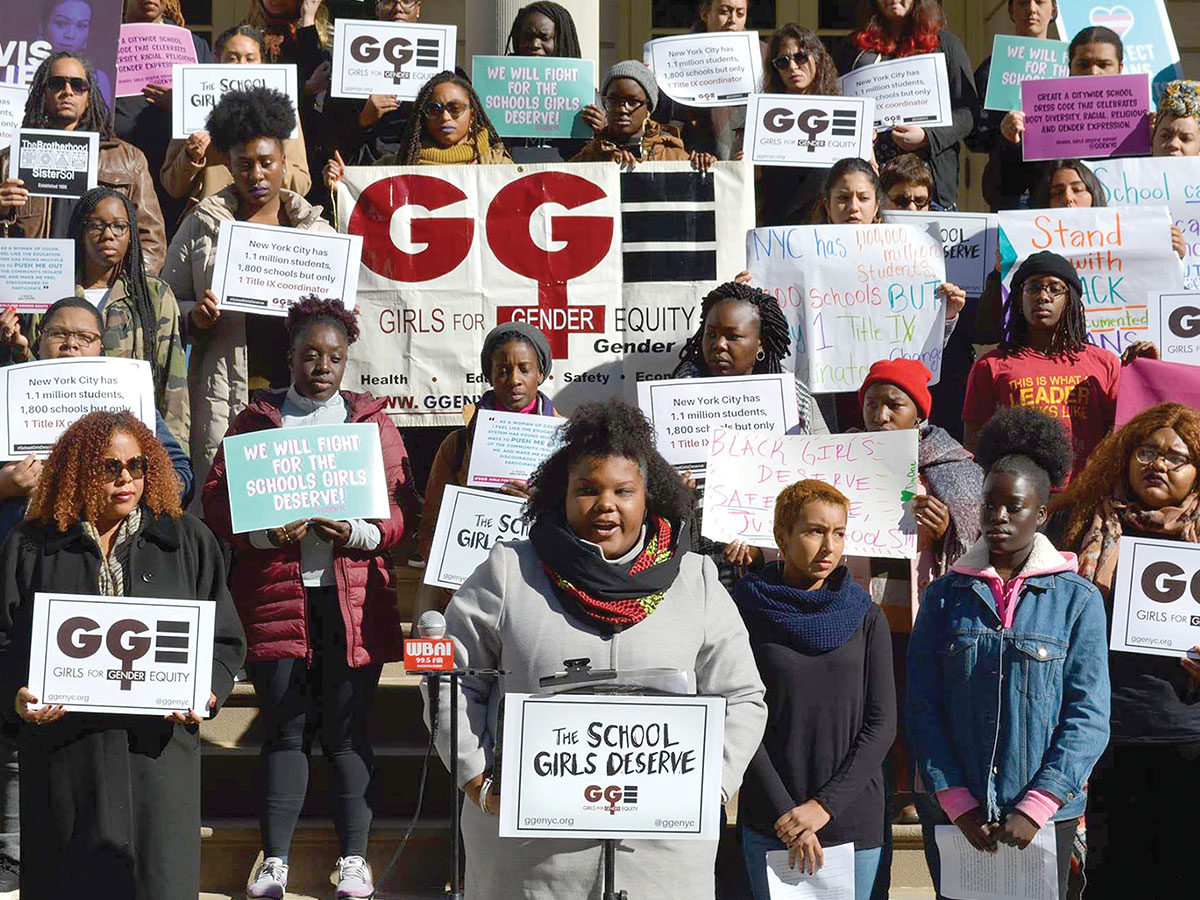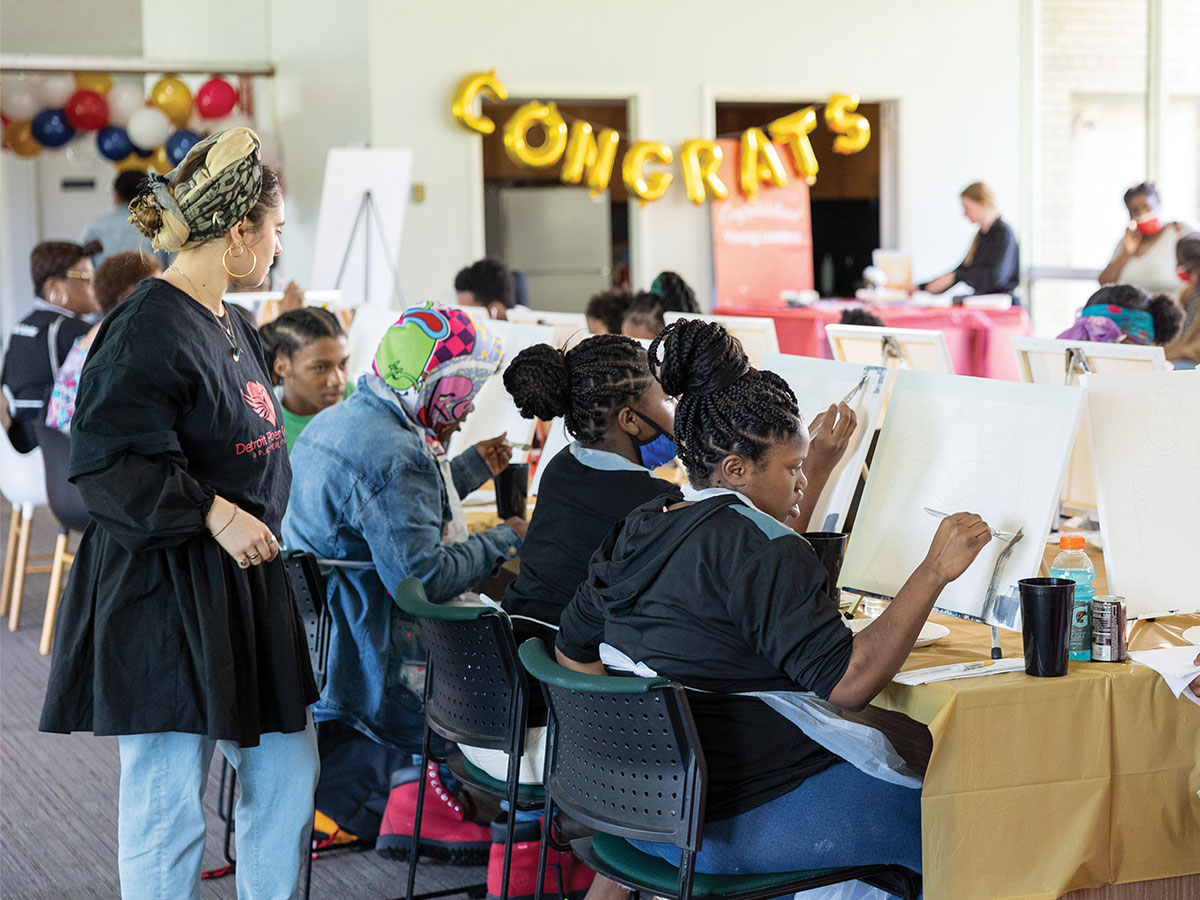The Process of Change: Reflections from the Blue Cross NC Foundation team

In 2021, our foundation partnered with the Kate B. Reynolds Charitable Trust on a request for proposals (RFP) titled “Supporting Grassroots Efforts to Promote Equitable Early Childhood Systems.” And even though we are more than two decades into our work as a grantmaking organization, this initiative brought with it many firsts.
This was the first time in several years that we had released an open funding opportunity and the first time ever we had designed an opportunity specifically for Black, Latino, American Indian, and people-of-color-led organizations. This funding opportunity also reflected an enhanced focus on centering equity and being intentional about making decisions in its design and implementation to reflect principles of equity including a focus on clarity, transparency, accessibility, and learning.
This focus on ensuring our applicant experience was as inclusive and accessible as it could be, was not a one-time undertaking, rather this was intended to be foundational to how we facilitate grantmaking moving forward.
With this long-term significance in mind, we knew it was essential we learn as much from the experience as possible. To do so we partnered with ETR Services on an external evaluation. I welcome you to check out the full report here.
In addition, I wanted to take this opportunity to highlight the perspectives of two members from our team who were heavily involved in the design, implementation, and evaluation of this request for proposal process. And so recently, I sat down with Vice President, Operations, Teresita Maz and Director, Early Childhood, Rob Thompson to reflect on their experiences.
The motivation to take a critical look at our request for proposal process really started with the newly formed cross-functional workgroup focused on operational excellence. How did operational excellence at the foundation start? What does operational excellence entail?
Maz: During our last team retreat in-person, before COVID, there were a lot of questions coming from the team about what it means for us to be an equitable funder. We had been doing this work for 20 years, and we have never asked ourselves, “Are we doing it right?” “Are we being fair?” Those questions came later with our equity work. We started looking into how the private sector uses continuous improvement and customer experience and how we could incorporate these at the foundation while integrating equity into our practices.
Right now, operational excellence contains the concepts of continuous improvement and exceptional experience. Focusing on those two areas requires us to constantly evaluate what we are doing and ask ourselves – who is missing and how are we creating barriers for organizations to access funding? What are the biases that we are putting in our way of working that we need to continually reflect on and change to build that muscle of equity?
Operational excellence started as an idea, a concept of changing to have more of a continuous improvement mindset, testing out ideas, being ok with failure, and bringing learning into that process. This has been key for developing operational excellence for what it is today.
Operational excellence is at the juncture between programs and operations. What does a focus on operational excellence make possible for our programmatic work?
Thompson: Operational excellence helps us ensure that we have processes in place to implement work in a way that is true to our vision and values as an organization. More specifically, when we talk about being equitable grantmakers, it is more than who and what we fund, it’s also about our process for supporting different organizations and projects. To me, that is where operational excellence really fits in.
Why is it important to have a focus on an equitable and exceptional experience?
Thompson: We were early in the development of our early childhood focus area, and we recognized there was a need to diversify the organizations we were funding, particularly in terms of the race and ethnicity of the organizational leadership and the communities they served. Due to structural racism, philanthropy tends to fund large, white-led organizations, leaving people of color-led organizations with less capacity to pursue their missions and to serve their communities. Our goal was to interrupt this cycle.
To do that, we created a funding opportunity specifically aimed at supporting organizations led by and serving Black, Latino, American Indian, and other people of color. Since this involved reaching new organizations that we didn’t have previous relationships with, it was critical to ensure that we centered the grantmaking process around what was most helpful for them.
Maz: As a philanthropic organization, we have historically sat in a place of power. We need to remind ourselves that this is a partnership between us as funders and the nonprofits we work with. In any healthy business model, you want to make sure that the customer is getting what they need and expect. That is how business succeeds. Because we don’t depend on a customer model, we must be even more mindful of how we are approaching communities in a way that we are respecting people’s time, commitment, knowledge, and experience. That requires us to bring them into the conversation to better understand how they are experiencing the full life cycle of their relationship with us.
Further, philanthropy has historically disinvested in certain communities and certain groups. We know there is an uneven field for the nonprofit sector to access resources. We must go to the basics—who are we trying to serve? We’re trying to serve communities and in order to do that we must see our non-profit partners as our customers. If they don’t exist, we don’t have a way to do what we do. Each partner deserves the best from us. If we want to achieve our racial equity goals by increasing the number of investments to organizations led by people of color, we need to understand how we are entering into the relationship, what level of service we aim to provide, and what changes in our organizational structure and practices are needed to intentionally put our “partner experience” at the heart of our cross-functional operations.
Why was it important to do an evaluation of this RFP process?
Maz: For this specific funding opportunity, there was a focus on equity throughout the entire process. Because we had not done that before with such intentionality, we needed to assess and understand if what we thought we were doing was actually working for our partners. We are testing new practices, making adjustments, and learning what other organizations are doing. How do we know if this is effective or not? How do we know if this is meaningful to our “customers” if we don’t ask? It was important to have an external firm collect this data and provide us with insights on what our partners really experience. This evaluation is not just for us and our own understanding of what’s working and what’s not. It is a demonstration of that commitment and respect to our communities.
What was your experience like during this RFP process? What was your experience like with the evaluation?
Thompson: On the design-side, my own involvement in RFPs had always been applying for them. My professional background was in nonprofit work. I definitely didn’t have an appreciation for the level of planning that needed to go into it, but the most important takeaway for me is about language. It seems obvious looking back, but different people have different definitions of the same words and phrases. We caused a lot of confusion with the term “systems change.” We had our own understanding, but that wasn’t necessarily shared by many of those applying for the grant. It was a big learning experience.
With regard to the evaluation, the conversations that I had with the team at ETR Services were good opportunities for reflection. When you get into the day-to-day of implementing the funding opportunity, there is not always that space. Answering their questions helped realize some key lessons from the project.
Overall, the evaluation was a really good experience. It was affirming to see the feedback from applicants and grantees. It wasn’t 100 percent perfect, but there was a lot of positive feedback about the strategies we used to lighten the burden on applicants and ensure that the process was equitable.
The most gratifying feedback were the comments expressing appreciation of the foundation’s willingness to evaluate its own processes. I am grateful to work somewhere that can take the magnifying glass to look at its own work, and that is willing to ask our partners what we can do better to serve the community.
Maz: It was a new experience to lean into being a thought partner to Rob. From an operations standpoint, it provided me with a better idea of what our program staff were trying to accomplish and their strategies. Our partnership between operational excellence, program, and learning functions created the container for testing different approaches, sometimes asking thought-provoking questions, and getting the team to pause and understand if our goals and values were aligning with implementation plans. This elevates operational excellence to not just being a process manager or operational support but allows us to bring the lens of customer experience—what kind of experience we want to create for the applicants. Putting ourselves in the applicant’s shoes or thinking about the process as though we are the ones applying. Being involved in the process created a richer experience for all of us.
One of the things that I was excited about with the evaluation was using a journey map, a visual tool that helps us define our customers’ needs, problems, and engagement with our organization. Creating it allowed us to see and better understand the different interactions that we have with our applicants, the different touchpoints throughout the application phase, and whether that specific touchpoint created a good experience or a barrier. It was developed in two phases—the first phase was internally asking questions about how we think a specific persona experiences our grantmaking process. The second part was actually testing it out and asking about the different touchpoints and how applicants experienced it. The journey map that we created for this evaluation focused on the experience of a Black executive director of a grassroots organization outside of the Triad with a close, direct connection to community and early childhood issues. We know that the way that American Indian-led organizations or the way Latino organizations experience our process, won’t be exactly the same. The process of going through this journey map exercise helped us to understand how we could use a tool like a journey map to understand various perspectives. When we saw the results, we were excited to see where there was alignment between what we thought and what applicants shared. There were also places that were eye openers for us.
What did you learn through this process and through the evaluation?
Thompson: One thing I learned, which I mentioned earlier, is to interrogate the words we are using. Different groups of people may have different meanings for the same words and phrases, so there are consequences for how we describe the work. One of the most valuable things that we can do at the foundation, and one of the things we did with this funding opportunity, is to get external feedback before we finalized the RFP. In this case, we asked five leaders of community-based organizations with experiences in the field of early childhood education to review the funding opportunity and provide feedback on what could be improved and clarified. We wanted to make sure the language we were using resonated with the people who the funding opportunity was designed for.
Related to that, another thing we did was to have preliminary conversations with any potential applicant that wanted to have one. Two of us—myself and our grants manager—had more than 20 calls with people who expressed interest in applying. This part of the process took a substantial amount of time on our end. However, we found it to be one of the most important steps in the process for a couple reasons. First, it helped applicants tailor their application for the specific funding opportunity, and in some cases, it helped them decide not to apply if the work wasn’t a fit. Second, it was a great opportunity to have a back-and-forth conversation, so we got to know organizations in a way that wasn’t dependent on a written application. It was also just a lot of fun. There are so many great people and organizations in our state doing incredible work and it was inspiring to hear them talk about it. Recognizing the amount of time it takes, we are now intentional in our timelines to allocate sufficient staff time and resources to this step.
Also, at the onset, we made the decision to make the process bilingual in English and Spanish with the understanding that there is a large and increasing population of native Spanish-speakers. If we want to promote an early childcare system that serves all families and young children well, we need to prioritize language access. We had live interpretation and translation services for webinars and any interviews, and we ended up supporting two organizations that are primarily Spanish speaking.
Maz: One thing I learned throughout the process was that there is no right way to do it. It is more an art than science. When we don’t have an instruction manual that tells us “This is how you do it,” it requires us, as a team, to be more open to change. With continuous improvement, we need to remind ourselves that this is not the end, we are going to change this, as communities change, and as the environment changes. It will never be one-size-fits-all or one specific way, we must think strategically on how to function internally due to the effort that this requires.
We are customizing a lot of the work. The more customized we want to be to meet the needs of the community, the more time and effort we need to invest internally. We have big strategies, and we want to move the money fast into communities. However, if we want to be intentional about how we are doing it and who we are giving resources to, we need to pause and do it right. It takes time to get to know people, build trust, and understand what they need. There is a lot of work that our program officers do that isn’t captured anywhere. By the time we brought the funding opportunity to implement it, Rob had been thinking about and working on it for a long time. This might not be reflected in the whole process but reflects the ultimate outcomes. The time invested is worth it.
What are you taking with you?
Maz: From an operational excellence perspective, there are many ways that we can do the work and it’s up to us to figure out what is really required and what is a nice-to-have. We do want our partnerships to be meaningful to help us achieve our organizational goals and we are the ones that create the barriers for investments and resources to flow into communities. We have to recognize that and act on it.
We can’t have rigid processes. There are pieces that we can use as a general practice. But we really need to be nimble in how we approach the work and be ok with the unknown and if something doesn’t work, let’s try again.
Thompson: The number one thing that I am taking away is that it’s a good thing when philanthropy and foundations try to be more humble about their work, and operational excellence is a way to put humility into action by asking grantees, our partners, and communities what we can do better and making responsive changes based on that.
This article was originally published by Blue Cross and Blue Shield of North Carolina Foundation



